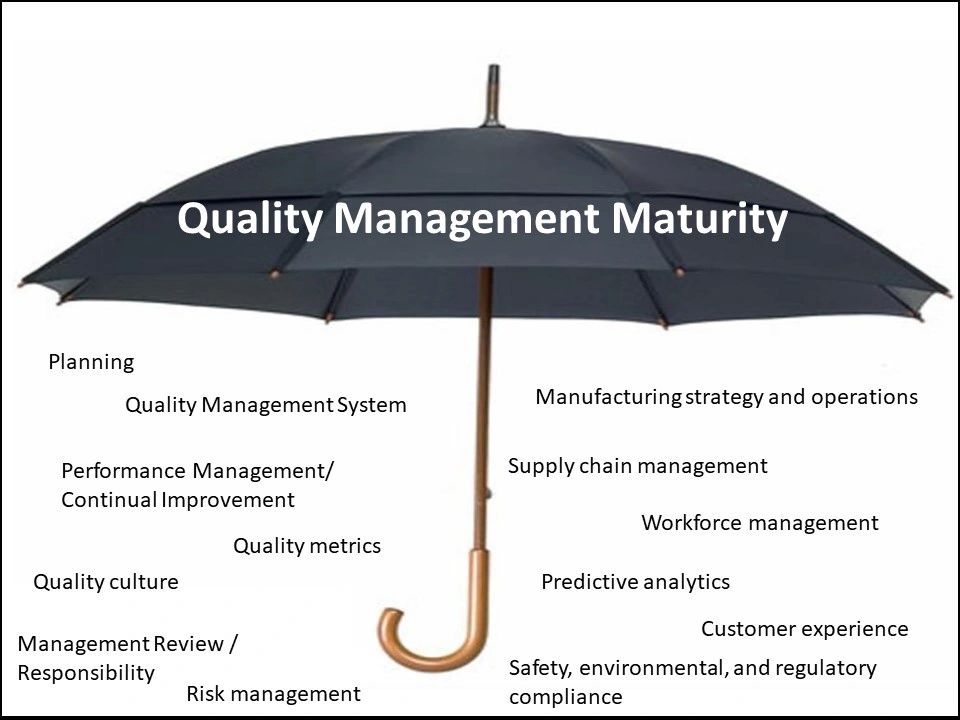Just as an umbrella protects from the rain, a robust quality management framework safeguards your organization against risks and inefficiencies.
✅️Quality Management System (QMS): The backbone of quality practices, ensuring consistency and compliance across the board.
✅️Planning: The foundation for effective quality management, ensuring all processes align with strategic objectives.
✅️Performance Management/Continual Improvement: A commitment to refining processes, enhancing productivity, and driving quality forward.
✅️Quality Metrics: The measurement tools that help assess performance and identify areas for improvement.
✅️Quality Culture: Fostering an environment where quality is everyone’s responsibility, promoting accountability at all levels.
✅️Management Review/Responsibility: Regular evaluations that ensure leadership is engaged and informed about quality performance.
✅️Risk Management: Proactively identifying and mitigating risks to safeguard quality and operational integrity.
✅️Manufacturing Strategy and Operations: Aligning manufacturing processes with quality objectives to deliver superior products.
✅️Supply Chain Management: Ensuring that quality is maintained throughout the supply chain, from raw materials to finished goods.
✅️Workforce Management: Engaging and training employees to uphold quality standards and contribute to the quality culture.
✅️Predictive Analytics: Utilizing data to forecast trends, helping to make informed decisions that enhance quality.
✅️Customer Experience: Prioritizing customer satisfaction by delivering quality products and services consistently.
✅️Safety, Environmental, and Regulatory Compliance: Meeting all regulatory requirements and ensuring the safety of employees and the environment.
Embracing these elements enhances quality management and also fosters a culture of excellence that can significantly impact your organization’s success.



